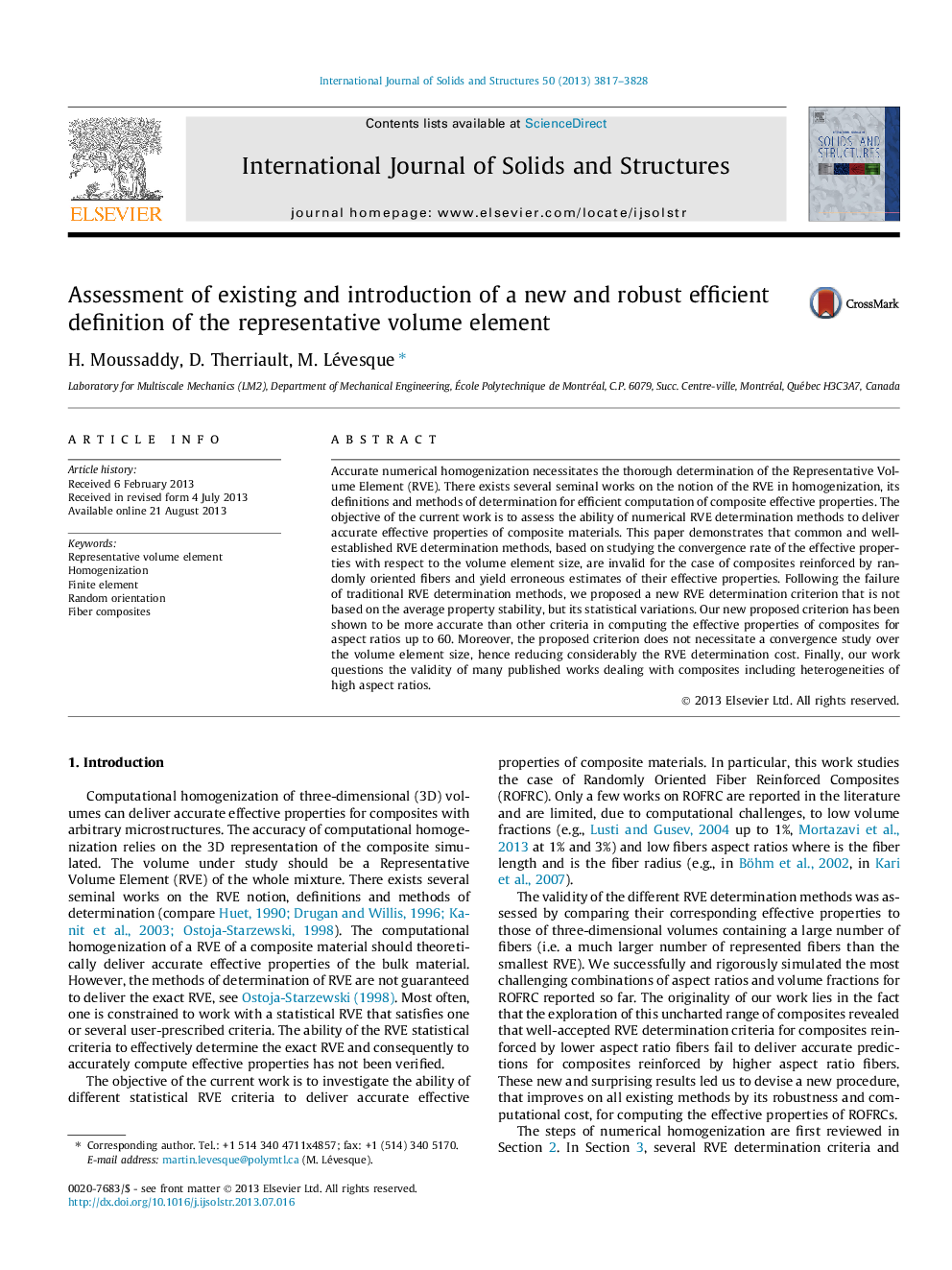| Article ID | Journal | Published Year | Pages | File Type |
|---|---|---|---|---|
| 277782 | International Journal of Solids and Structures | 2013 | 12 Pages |
Accurate numerical homogenization necessitates the thorough determination of the Representative Volume Element (RVE). There exists several seminal works on the notion of the RVE in homogenization, its definitions and methods of determination for efficient computation of composite effective properties. The objective of the current work is to assess the ability of numerical RVE determination methods to deliver accurate effective properties of composite materials. This paper demonstrates that common and well-established RVE determination methods, based on studying the convergence rate of the effective properties with respect to the volume element size, are invalid for the case of composites reinforced by randomly oriented fibers and yield erroneous estimates of their effective properties. Following the failure of traditional RVE determination methods, we proposed a new RVE determination criterion that is not based on the average property stability, but its statistical variations. Our new proposed criterion has been shown to be more accurate than other criteria in computing the effective properties of composites for aspect ratios up to 60. Moreover, the proposed criterion does not necessitate a convergence study over the volume element size, hence reducing considerably the RVE determination cost. Finally, our work questions the validity of many published works dealing with composites including heterogeneities of high aspect ratios.
